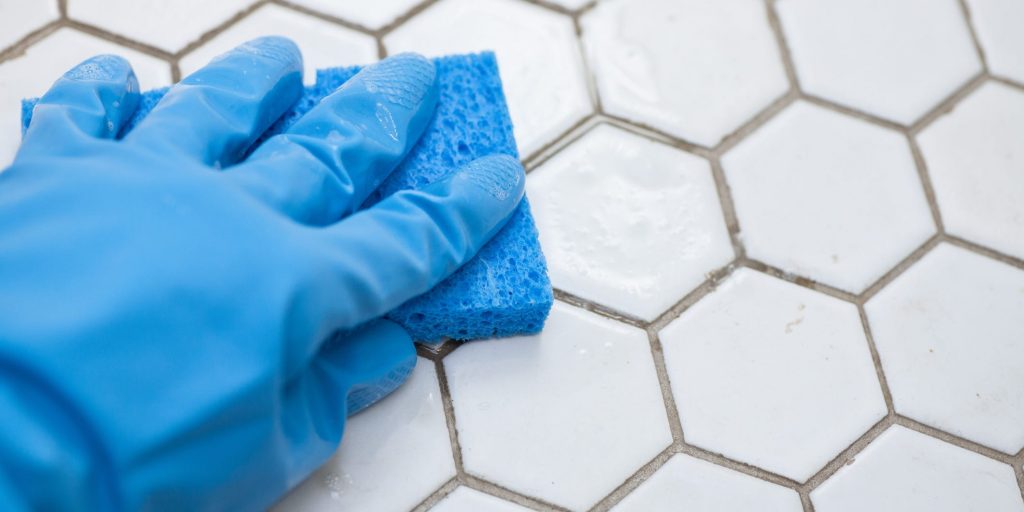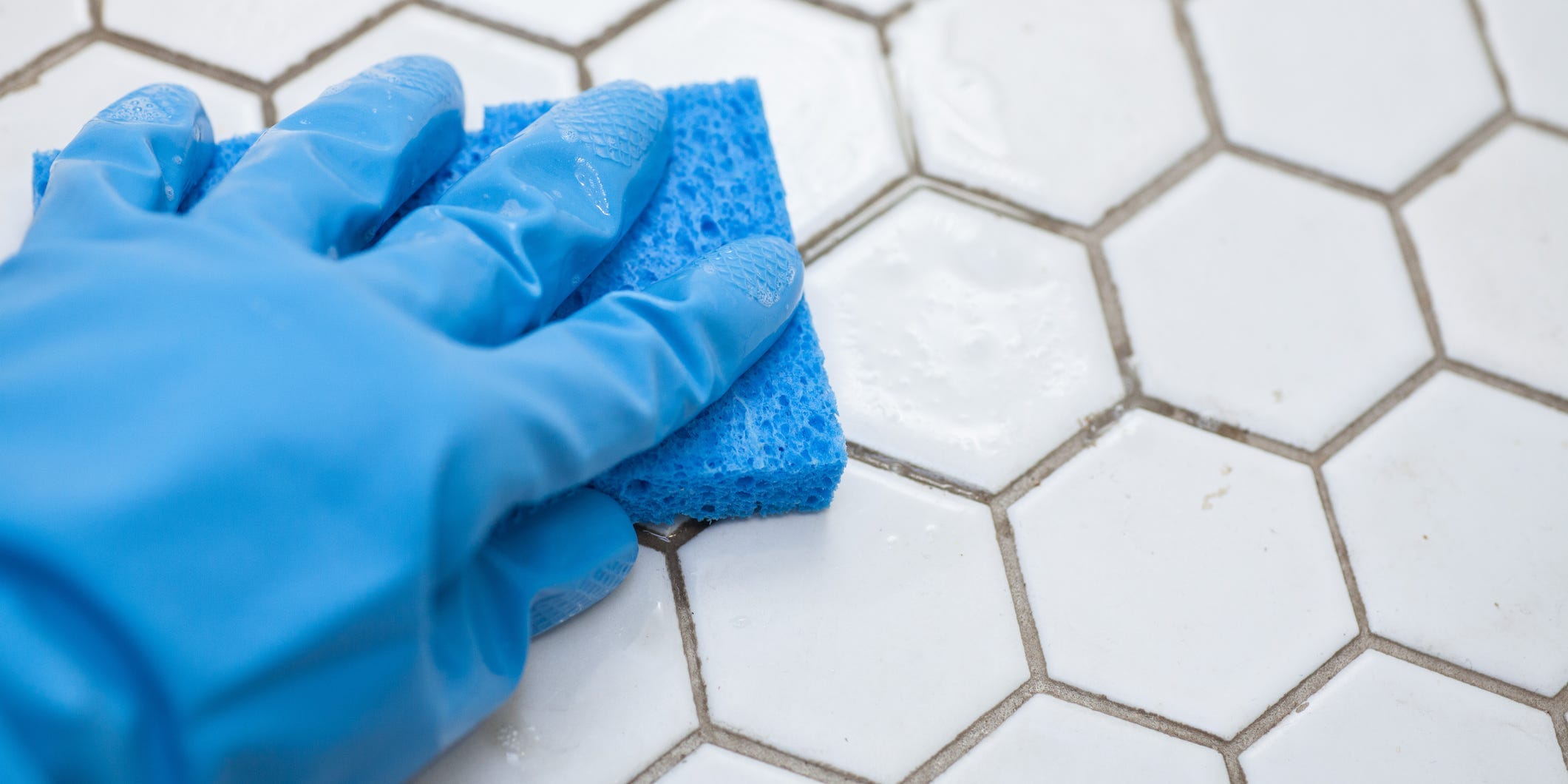
- Mold and mildew are both fungi that grow in moist environments.
- Vinegar, bleach, and antimicrobial cleaners can remove mildew and some level of mold.
- Mold may require professional remediation if the growth is larger than 10 square feet.
- Visit Insider's Home & Kitchen Reference library for more stories.
When you hear about mold and mildew, you often hear about them together. So there's an ever-present assumption that if you find one, you'll find the other. Both are fungi that typically grow when there's a moisture imbalance in a home, but mildew is actually a specific type of mold.
There are specific differences between mold and mildew, and knowing these differences will help you decide if you can treat the issue yourself and what the clean-up process entails.
How to tell the difference between mold and mildew
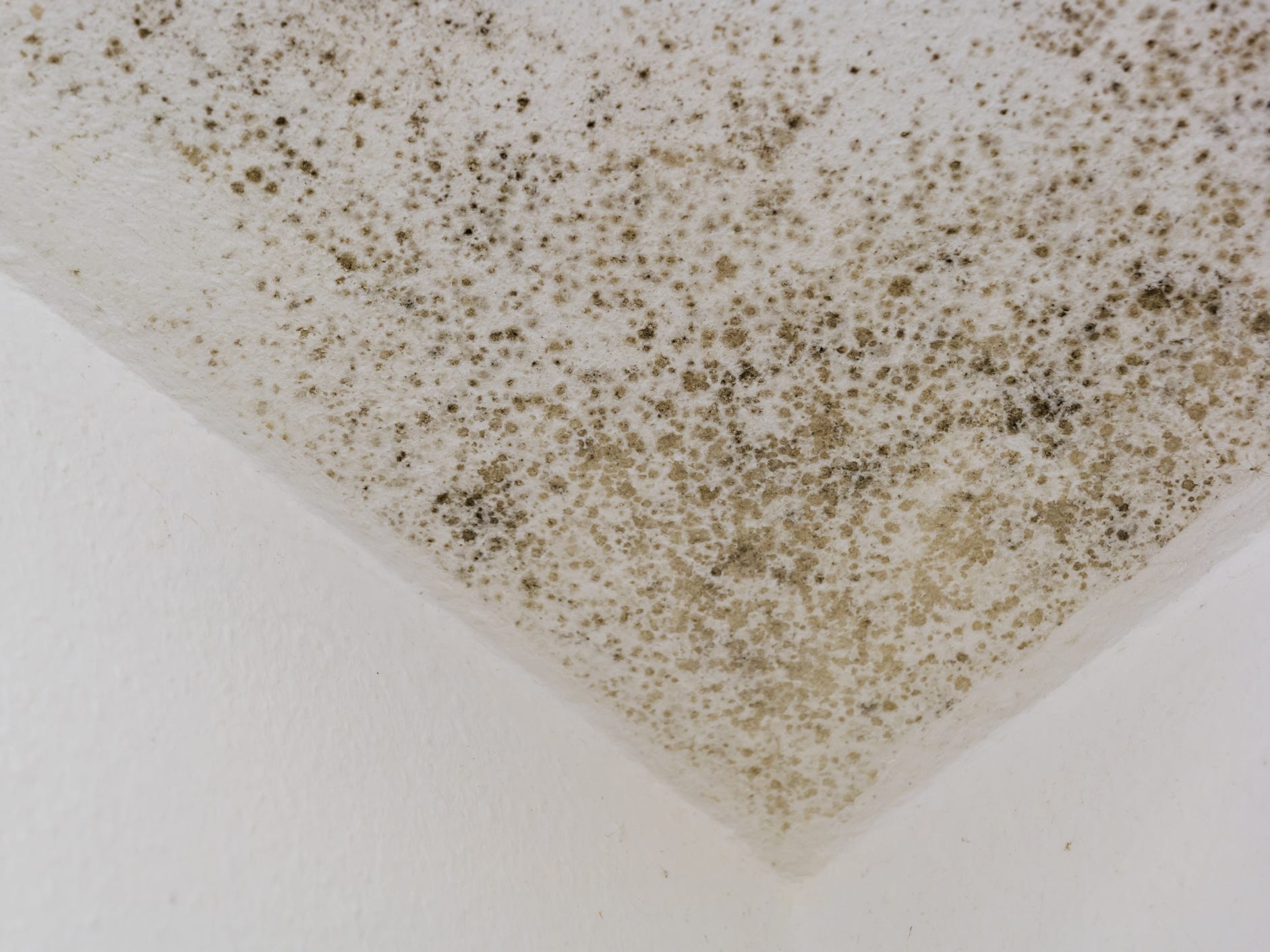
According to Dave Harley of AdvantaClean of Badgerland in Milwaukee, Wisconsin, both mildew and mold are fungi that need food, water, and mild temperatures to grow. They're also both likely to develop in areas that are dimly lit and poorly ventilated.
However, the two are different, and these differences determine how to treat them.
"Mold tends to grow up and out from the surface and has roots called hyphae that extend below the surface where the mold grows," Harley says. "Mold tends to look 'fuzzy' and comes in many colors including black, gray, red, green, and purple — and it has a strong 'musty' odor."
On the other hand, Harley explains mildew tends to grow out, not up. "It looks flat and has a powdery look to it." He also says mildew is lighter in color, usually taking on a white, grey, or yellow hue, and has a less pronounced odor.
How to remove mildew
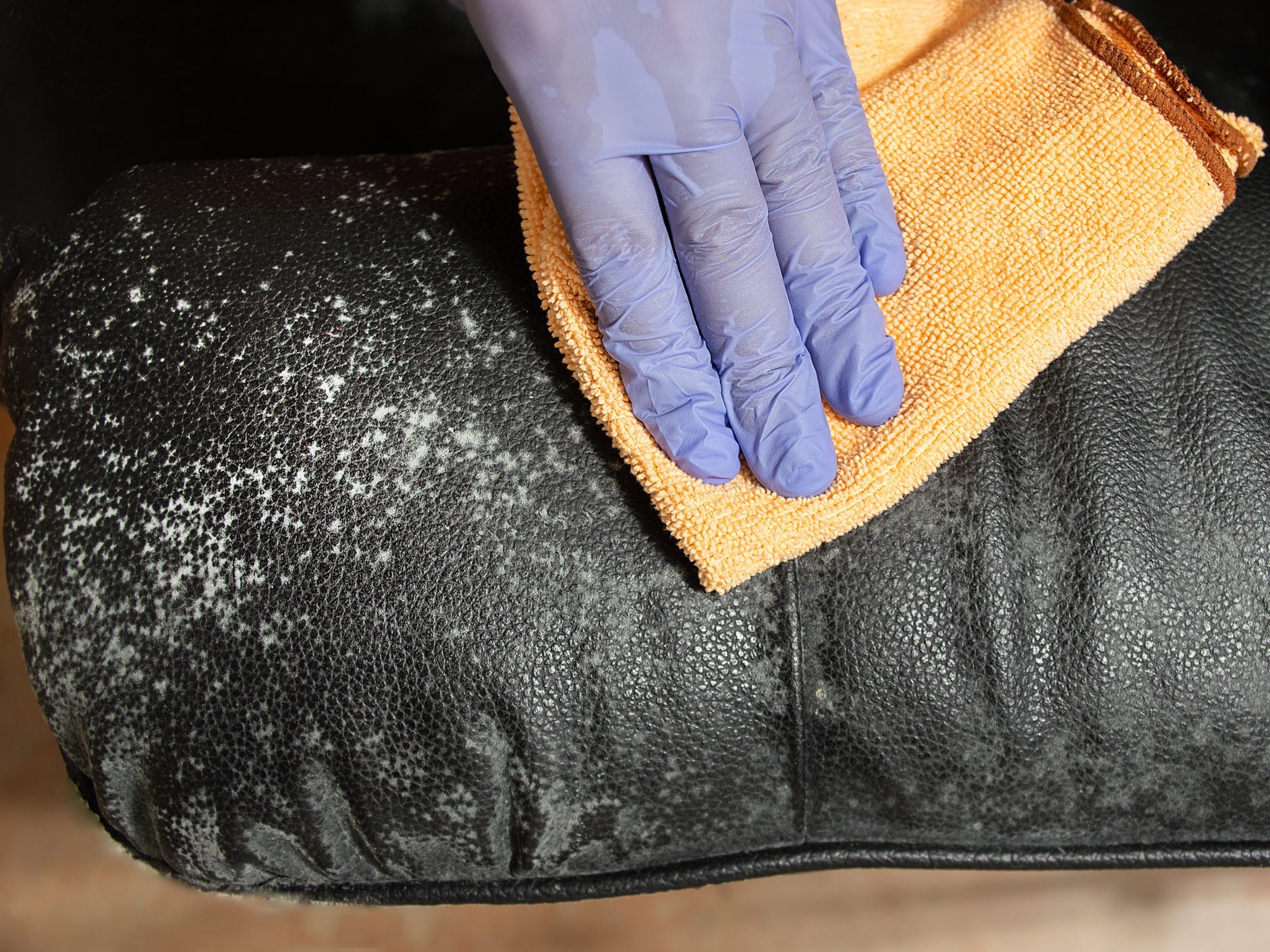
Fortunately, mildew lives on the surface and Harley says this means you can usually remove it with common household cleaners and other items found in the house.
Household cleaners, vinegar, or bleach can be used on most surfaces. Household cleaners tend to be more convenient since there's no mixing or measuring required. Bleach is a common household item that most people have on hand, but vinegar may be preferred by those who like natural solutions.
1. Household cleaners
"Mildew can be stubborn and you may need to scrub the area with a brush or scouring pad however," Harley says. "If you really want to be thorough, you can use an antimicrobial cleaner." Be sure to follow the instructions on the bottle.
2. Vinegar
Pour undiluted white vinegar in a spray bottle and then spray it directly on the mildew-covered surface. Let the vinegar remain on the mildew for at least half an hour. Then take a soft-bristled brush and scrub the area. Afterwards, use a clean cloth to wipe the area dry. Make sure to throw away the cloth once you're done.
3. Bleach
Mix two tablespoons of bleach per quart of warm water and pour on the mildew. Let it sit for 15 to 30 minutes, and then rinse.
4. Rubbing alcohol
For leather items, you can use rubbing alcohol. Mix one cup of alcohol to one cup of water, and then wet a cloth with this mixture and apply to the leather.
How to remove mold
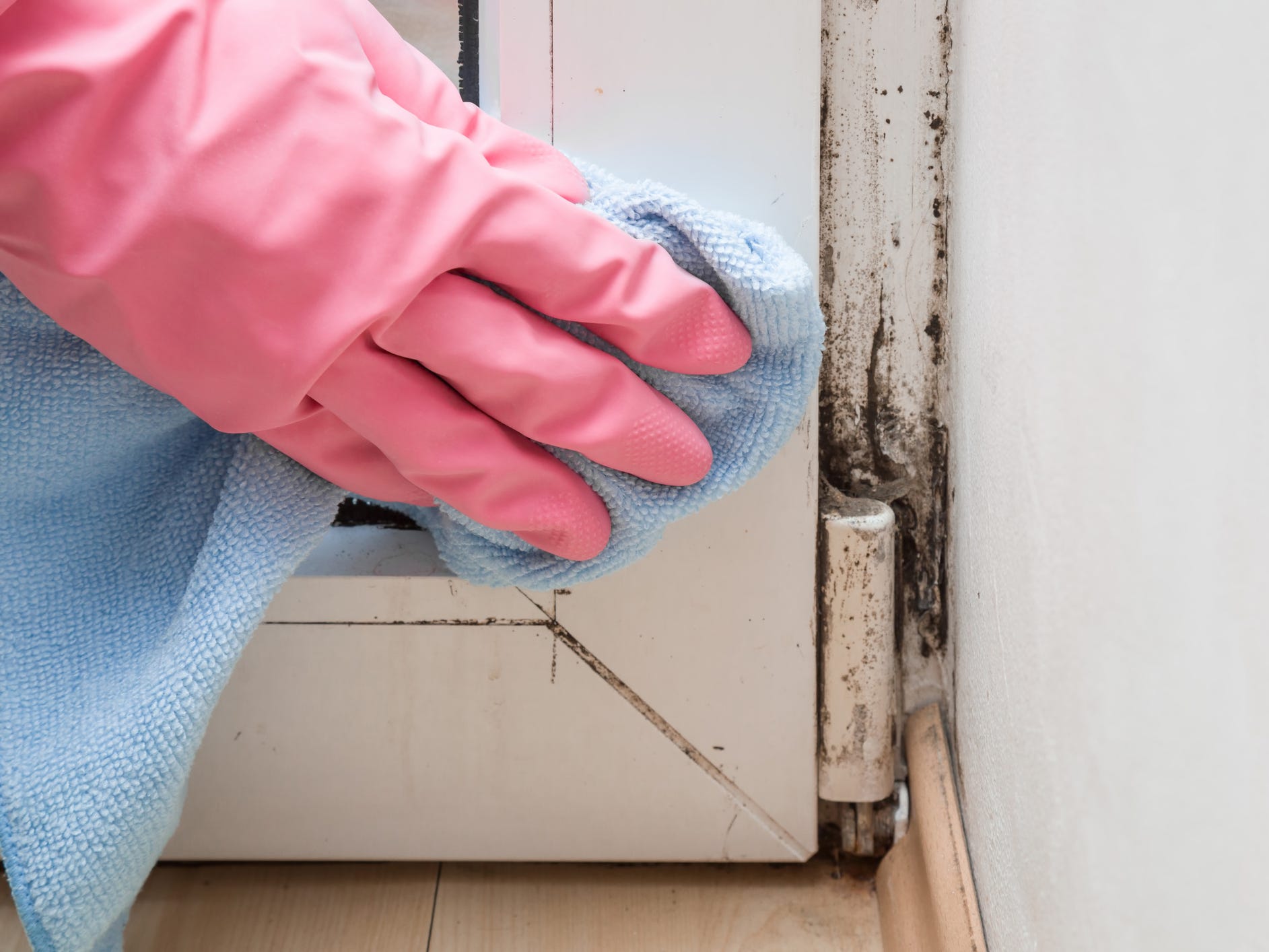
Mold removal is usually more difficult. Harley says this is because it grows beneath the surface. If the mold growth is in a small area of less than 10 square feet, use the same mildew removal techniques of applying household cleaners, vinegar, bleach, or alcohol.
If the moldy space exceeds 10 square feet, then the best course of action according to Harley is to entirely remove and dispose of the material where the mold is growing. "Depending on the [substrate], by the time the mold is visible, it has already compromised the material," he says. "For some materials like drywall and paneling, the typical treatment calls for actual removal and disposal."
This removal process often requires homeowners to get rid of entire slabs of concrete or wood framing and can involve tools and techniques they don't have. As such, Harley recommends it's best to consult a professional when encountering mold to get an expert opinion on how to remove it.
How to prevent mold and mildew from returning
"Mold and mildew need three things to grow: food, water, and temperature," Harley says. "A house provides plenty of material, like wood, carpeting, and drywall that can be used as food, and is always kept at a mild temperature, so the best way to prevent mold and mildew from returning is to reduce or eliminate the water that is available to it."
If you can control the moisture, he says you can control the mold and mildew.
- Keep the humidity level in the house below 50 percent year-round. In extreme cases, get one or two dehumidifiers to help control moisture.
- Run the bathroom vent fan for 30 minutes after a shower.
- Run the range hood fan over the stove for 10 minutes after you are done cooking.
- Make sure your clothes dryer exhausts to the outside.
- Keep your closet doors open so air can circulate.
Insider's takeaway
Mold and mildew are both fungi that indicate that there's too much moisture in your home. However mildew, which is a type of mold, tends to be easier to remove. Antimicrobial cleaners, vinegar, and bleach can all be used to remove mildew and small amounts of mold . However, if the mold is larger than 10 square feet, it's recommended to call in a professional.
